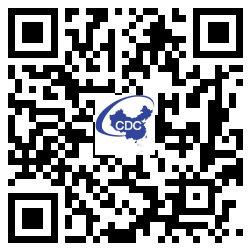《减盐电子周刊》2016年1月15日
发布时间:2016/02/03

2016年1月15日
本周的《减盐电子周刊》的更新内容包括一个项目招标通知(仅对美国)、钠摄入的新研究和2015-2020美国居民膳食指南。
新美国社区减钠项目招标通知
周一,美国疾病预防控制中心发布了项目招标通知Funding Opportunity Announcement (FOA) DP16-1607:社区减钠项目。通过这个项目,美国疾病预防控制中心计划在5年投入1500万美元实施和评估有可实施性的广泛覆盖并可持续的减盐策略,鼓励食品相关行业降低加工食品和餐饮业食品的钠含量。项目还期望提高:
·实施相关食品服务指导方案或标准,通过钠和食物准备行为来降低饭菜和/或菜品中的钠含量,以及环境政策/行为经济学方法;
·通过采购降低购买食品中的钠含量;
·低钠食品的可及性;
·顾客或大型食品服务商购买或选择低钠食品和/或原料。
·Purchase or selection of lower sodium food products and/or ingredients by either consumers or large food service operators.
预计5年项目开始时间为2016年9月30日,申请截止时间为2016年3月15日。申请者需要证明有能力开发和实施公共卫生策略来提高50万人的营养和减钠能力。更多的信息请见:http://www.grants.gov/web/grants/view-opportunity.html?oppId=280919. 美国疾控中心将于2016年1月28日东部时间下午3:30组织电话会来回答相关问题:收费电话: 1-210-234-0044; 免费电话: 888-810-4938; 参加验证码: 8344668.
新的研究发现美国人的盐摄入依然超标
最近的发病率死亡率周报 (MMWR) 显示,尽管有居民膳食指南,无论现有健康状况,大多数美国人仍然摄入过多的钠。文章《美国过量钠摄入流行情况-美国国家营养与健康调查2009-2012》数据显示与2015-2020美国居民膳食指南相关的过量钠摄入流行情况。结果还表明在2009-2012年:
·年龄大于19岁的成年人中,89%摄入过多的钠;
·能量摄入多的人钠摄入一般也较高,年龄段19-50岁的人群预计钠摄入量最高;
·年龄段19-50岁的人群钠摄入密度(摄入每1000卡路里的钠量),平均1730毫克钠/1000卡路里,2-3岁儿童的最低,平均为1466毫克钠/1000卡路里;
·90%没有高血压的成人每天摄入的钠超过2300毫克,86%患高血压的成人钠摄入超过2300毫克。
相关文章请见: http://www.cdc.gov/mmwr/preview/mmwrhtml/mm6452a1.htm?s_cid=mm6452a1_e#tab1.
《2015-2020美国居民膳食指南》正式发布
上周,美国卫生与人类服务部和美国农业部联合发布了《2015-2020美国居民膳食指南》。与其它建议一样,该指南建议美国成人每日钠摄入量不应超过2300毫克。全文请见如下链接: http://health.gov/dietaryguidelines/2015/guidelines/.
感谢您一直以来对减盐活动的支持。
请注意:
本简讯英文版由美国疾病预防控制中心发布,中文版由骄阳翻译公司翻译,如有歧义,请以英文版本为准。
该信息为与减钠的相关伙伴机构和个人分享将正在进行的减钠活动信息。目的是为相关同仁提供持续更新的信息,并为对减钠工作感兴趣或致力于减钠工作的个人或机构创建一个合作网络。《减盐电子周刊》将每两周发布一期,如果你知道一些应该添加进来的人,或者你希望被从该通信人中删除,请联系蔡颖女士(caiy@cn.cdc.gov)。
《减盐电子周刊》在内容上只基于新闻价值和读者的潜在兴趣进行选择。美国疾病预防控制中心对所提供文章的真实准确性不承担任何责任。文章的选择、省略或文章内容并不意味着美国疾病预防控制中心对其内容有支持或其它观点。《减盐电子周刊》中原作者的观点或者引用,完全是其个人观点,绝不代表美国疾病预防控制中心的官方立场。所提及的产品、商业名称、出版物、新闻来源以及网站等,仅作参考之用,并不意味着美国疾病预防控制中心的认可。
Hello –
This week’s CDC Salt e-Update includes a new Funding Opportunity Announcement, new research on sodium intake, and the 2015 – 2020 Dietary Guidelines for Americans recommendation for sodium intake.
New Sodium Reduction in Communities Program Funding Opportunity Announcement
On Monday, CDC released Funding Opportunity Announcement (FOA) DP16-1607: Sodium Reduction in Communities Program. Through this FOA, CDC plans to award approximately $15 million over a five year period to implement and evaluate promising, broad-reaching, and sustainable strategies while engaging food sector collaborators to facilitate sodium reductions in commercially processed and restaurant foods. The FOA also aims to increase the following.
·Implementation of food service guidelines or standards that include sodium, food preparation practices to reduce sodium content in meals and/or menu items, and environmental strategies/behavioral economics approaches;
·Integration of procurement practices to reduce sodium content in purchased items;
·Availability of lower sodium food products; and
·Purchase or selection of lower sodium food products and/or ingredients by either consumers or large food service operators.
The anticipated start date is September 30, 2016 for this five-year cooperative agreement, and applications are due March 15, 2016. Applicants should have demonstrated ability to develop and implement public health strategies to improve nutrition, and capacity to reach at least 500,000 people. More information may be found here: http://www.grants.gov/web/grants/view-opportunity.html?oppId=280919 will host an Informational Teleconference to answer questions about the FOA at 3:30 PM (ET) on January 28th, 2016. Please join by calling Toll Number: 1-210-234-0044; or Toll Free Number: 888-810-4938; Participant passcode: 8344668..CDC
Americans Still Consuming Excess Sodium, New Findings Indicate
Findings in a recent Morbidity and Mortality Weekly Report (MMWR) indicate that most Americans are still consuming excess sodium, regardless of dietary guidelines recommendations or existing health conditions. The report, “Prevalence of Excess Sodium Intake in the United States — NHANES, 2009–2012” examined the prevalence of excess sodium intake in relation to the 2015 - 2020 Dietary Guidelines for Americans recommendations. Results also indicate the following for 2009–2012.
·Eighty nine percent of adults aged ≥19 years consumed excess sodium.
·Sodium intake was typically higher among persons eating more calories, and estimated sodium intake was highest among persons aged 19–50 years.
·Sodium density (milligrams (mg) of sodium per 1000 calories consumed) was highest among adults aged 19–50 years (mean = 1,730 mg/1,000 calories) and lowest among children aged 2–3 years (mean = 1,466 mg/1,000 calories).
·Ninety percent of adults without hypertension consumed more than 2,300 mg of sodium per day, compared to 86% of adults with hypertension.
The MMWR article may be found here: http://www.cdc.gov/mmwr/preview/mmwrhtml/mm6452a1.htm?s_cid=mm6452a1_e#tab1.
2015 – 2020 Dietary Guidelines for Americans Released
Last week, the Department of Health and Human Services and the United States Department of Agriculture released the 2015 – 2020 Dietary Guidelines for Americans. Among other recommendations, the report recommends that Americans consume less than 2,300 mg per day of sodium. The full report may be found here: http://health.gov/dietaryguidelines/2015/guidelines/.
Thank you for your continued engagement in sodium reduction.
We are sending this information in an effort to inform our stakeholders of relevant sodium reduction efforts that are occurring. The purpose of this communication is to provide continued follow up with stakeholders and create a network of partners working on and interested in sodium reduction. The Salt e-Update will be sent every two weeks. For questions or comments, or to be added or removed from this communication, contact Jessica Levings at JLevings@cdc.gov.
Salt e-Update content is selected solely on the basis of newsworthiness and potential interest to readers. CDC assumes no responsibility for the factual accuracy of the items presented. The selection, omission, or content of items does not imply any endorsement or other position taken by CDC. Opinions expressed by the original authors of items included in Salt e-Update, or persons quoted therein, are strictly their own and are in no way meant to represent the official position of CDC. References to products, trade names, publications, news sources, and Websites are provided solely for informational purposes and do not imply endorsement by the CDC.
附件:
 京公网安备 11010202010327号
京公网安备 11010202010327号
